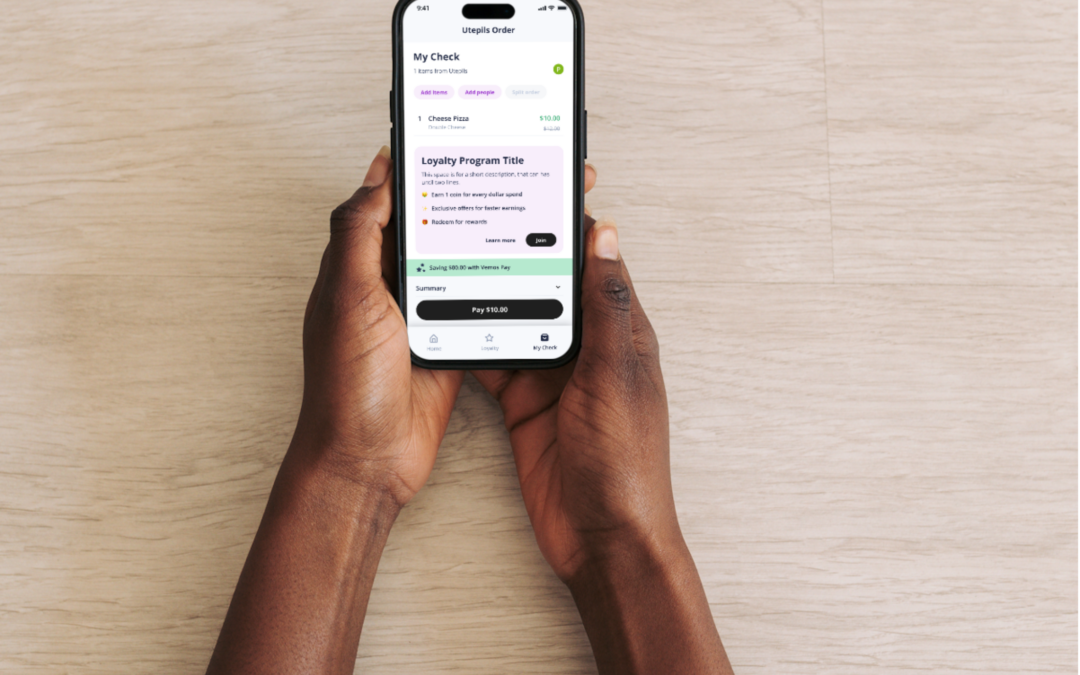Revolutionizing Dining: How Mobile Payment Options Save Time for Restaurants and Guests
The restaurant & bar industry has experienced a high velocity of transformation since the pandemic. And while many wish we could go back to what it was, the reality is we’re forced to face this new era of hospitality. One of the most significant advancements that consumers have latched onto in every industry, including restaurants, is the ability to pay their check from their phones. And while this solution is convenient for diners, it also offers substantial time-saving (and revenue driving) benefits for restaurants.
Here’s how mobile payment options are reshaping the dining experience and improving operational efficiency.
Streamlined Payment Processes
Traditionally, the payment process in restaurants can be time-consuming. Guests wait for their server to bring the check, then again for the server to return to grab the credit card, then once again while the server processes the payment in the POS . This back-and-forth takes an average of 12 minutes, especially during peak hours. By allowing guests to access their check and pay through their phones through solutions like Vēmos Pay, restaurants eliminate these steps. Customers can view their bill, split it with friends, add a tip, and complete the payment in a matter of seconds. This streamlined process significantly reduces the wait time, enhancing the overall dining experience.
Improved Table Turnover
Faster payments lead to quicker table turnover, a critical factor for maximizing revenue, especially in busy establishments. When guests can pay immediately from their phones, tables become available more quickly for the next set of diners. This increased efficiency can lead to higher seating capacity and more customers served during peak times. For restaurants, this means a boost in daily sales and an improved bottom line.
Enhanced Server Efficiency
When guests handle their payments independently, servers are freed from the repetitive task of processing checks. This allows them to focus more on providing excellent service, attending to customer needs, and managing multiple tables effectively. With less time spent on payments, servers can enhance the dining experience through better interaction and attention to detail, which has proven to show an increase in customer satisfaction and tips.
Reduced Errors and Increased Security
Mobile payments also reduce the potential for human error. Traditional payment methods can involve mistakes in entering amounts, splitting checks, or calculating tips. Mobile systems automate these processes, ensuring accuracy and reducing the risk of disputes. Additionally, mobile payment platforms often have enhanced security features, protecting customer data and reducing the risk of credit card fraud.
Advanced Loyalty Programs
Many mobile payment solutions integrate seamlessly with loyalty programs, allowing restaurants to reward their customers instantly. But there are some – including Vēmos Pay – that actually enhance loyalty programs by automating offers based on what the guest has purchased. With this solution, guests can earn points, can automatically redeem offers on their check from their phone, and receive personalized promotions based on their past habits. This level of POS integration with a mobile payment solution is what allows what we call a live-check experience, meaning offers, points and rewards are based on what the guest is buying in-the-moment. This not only enhances customer loyalty but also provides valuable data insights for restaurants to tailor their marketing strategies to deepen guest relationships.
Future-Proof Your Establishment
Technology enhancements don’t need to be a complete operational overhaul. In fact, we at Vēmos believe that technology should simply enhance restaurant operations, not replace it. With a simple turn-of-the-switch, you can enable Vēmos Pay in your POS system and be up and running in less than 60 seconds. With this integration, your guests will have a better experience while you’re able to streamline operations, enhance service quality, and boost revenue. As the industry continues to evolve, embracing these innovations will be key to staying competitive and keeping up with customer demands.

